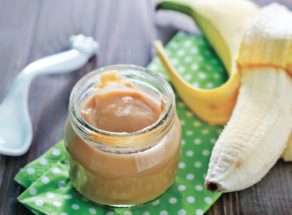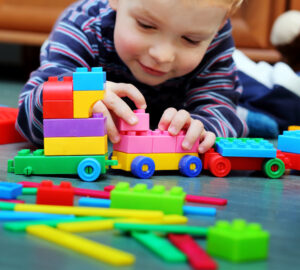By Lisa Kimura
One of the most fun “firsts” is baby’s first food. Messy and photo-worthy, it’s always a memorable experience, whether baby enjoyed it or not!
 The first question many parents ask is when to introduce solids to their little one. While it’s fun to start exploring with food, it’s even more important that baby is developmentally ready. Both the World Health Organization and the American Academy of Pediatrics recommend nothing but breast milk until six months old; this means no food, or even water, as breast milk provides all the hydration and nourishment a child needs during this important period.
The first question many parents ask is when to introduce solids to their little one. While it’s fun to start exploring with food, it’s even more important that baby is developmentally ready. Both the World Health Organization and the American Academy of Pediatrics recommend nothing but breast milk until six months old; this means no food, or even water, as breast milk provides all the hydration and nourishment a child needs during this important period.
In addition to age, look for other signs that your baby is ready for solid foods. Can baby hold his or her head in a steady, upright position? Can your baby sit without support? If you answered yes and you have the OK from your baby’s doctor, it’s time to get started!
What should you feed first? In the past, pediatricians often recommended rice cereal as a first food. It’s easy to digest and bland in flavor, which helps baby get used to new textures. However, processed white rice flour cereal lacks much in the way of nutrition or fiber.
Don’t be afraid to experiment with vegetables, fruits and proteins instead. In fact, poi, which is high in calories, easily digestible, and an excellent source of calcium and iron, has been called the “perfect” baby food.


Remember: avoid honey, cow’s milk and soy milk before age one, and if allergies run in your family, check with your pediatrician to determine the best strategy for introducing allergenic foods.
Exploration through food is important: texture, taste and temperature give babies a multi-sensory experience. Let your child hold her own utensils and practice picking up food. Even if it looks like a mess; don’t worry, it gets easier, and baby is a full participant in the process, constantly learning about this brave new world of solids.
Questions? Contact Healthy Mothers Healthy Babies’ MothersCare Line at (808) 951-6660 or visit www.hmhb-hawaii.org for more resources and information.
Lisa Kimura is the Executive Director for Healthy Mothers Healthy Babies Coalition of Hawaii. She can be reached at [email protected] or (808) 737-5805



